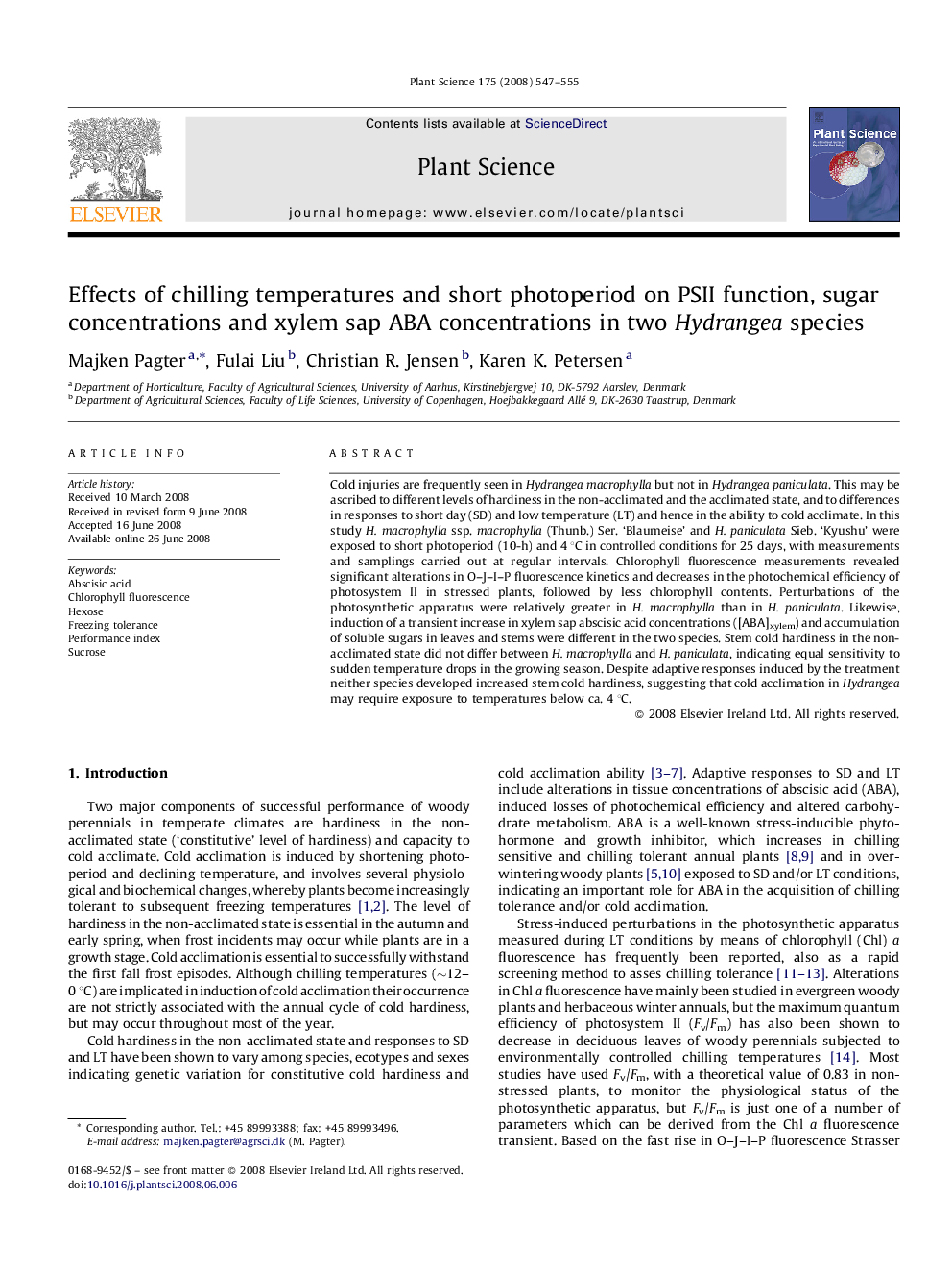| Article ID | Journal | Published Year | Pages | File Type |
|---|---|---|---|---|
| 2018146 | Plant Science | 2008 | 9 Pages |
Cold injuries are frequently seen in Hydrangea macrophylla but not in Hydrangea paniculata. This may be ascribed to different levels of hardiness in the non-acclimated and the acclimated state, and to differences in responses to short day (SD) and low temperature (LT) and hence in the ability to cold acclimate. In this study H. macrophylla ssp. macrophylla (Thunb.) Ser. ‘Blaumeise’ and H. paniculata Sieb. ‘Kyushu’ were exposed to short photoperiod (10-h) and 4 °C in controlled conditions for 25 days, with measurements and samplings carried out at regular intervals. Chlorophyll fluorescence measurements revealed significant alterations in O–J–I–P fluorescence kinetics and decreases in the photochemical efficiency of photosystem II in stressed plants, followed by less chlorophyll contents. Perturbations of the photosynthetic apparatus were relatively greater in H. macrophylla than in H. paniculata. Likewise, induction of a transient increase in xylem sap abscisic acid concentrations ([ABA]xylem) and accumulation of soluble sugars in leaves and stems were different in the two species. Stem cold hardiness in the non-acclimated state did not differ between H. macrophylla and H. paniculata, indicating equal sensitivity to sudden temperature drops in the growing season. Despite adaptive responses induced by the treatment neither species developed increased stem cold hardiness, suggesting that cold acclimation in Hydrangea may require exposure to temperatures below ca. 4 °C.
